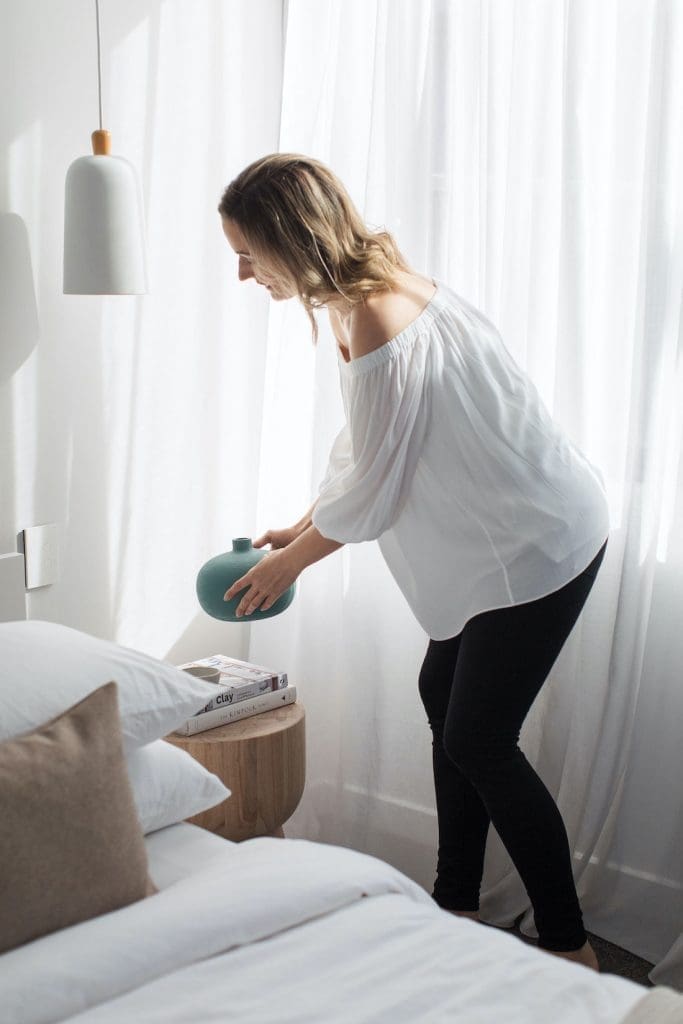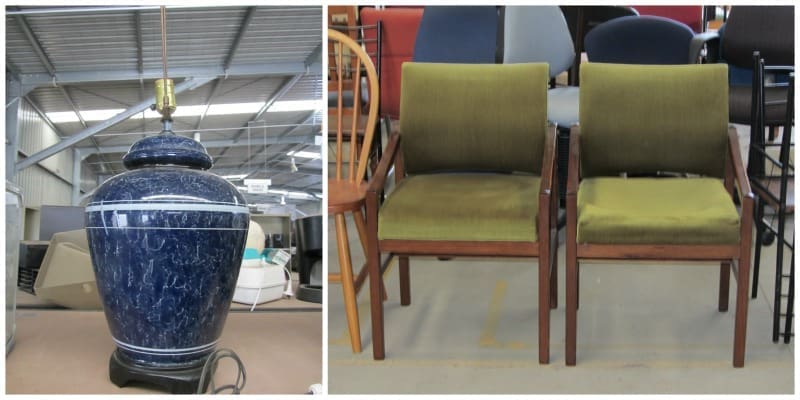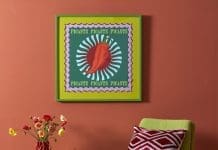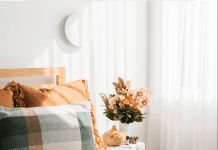You might be surprised to know that we love op-shopping! It’s a fabulous way to find unique pieces for the home. Plus, buying second hand is one of the most sustainable ways to decorate the home as it essentially uses no additional resources.
For many people going to an op shop means trawling through garbage to bring home things you’ll never use or want. While that can be true, it doesn’t have to be with our tips for op-shopping!
Keep reading for tips on how to find great second hand pieces that will work with your interior style.
Related article: Our favourite places to shop for large rugs
Related article: Quality over low-cost — Best places to shop for dressers and chest of drawers

Why op-shop?
We’re all for luxury and don’t have any trouble spending big. But without a limitless budget, we often mix high with low, new and old, designer with DIY, to furnish interiors.
Shopping at op shops, thrift stores, vintage markets, second-hand furniture shops, Facebook Marketplace or Gumtree gives you access to one-of-a-kind treasures you won’t find in mainstream retailers. From antique furniture and handcrafted ceramics to retro decor and rare collectables, second-hand shopping allows you to find pieces from potentially anywhere in the world that will inject character into your home at a bargain price.
Have you ever noticed that many homeware chain stores all stock similar (if not identical) products at the same time? Well at a thrift store, you can break away from the norm to find different pieces — helping you create a more individual home that reflects your personal style.
If you love an upcycle or DIY project, stumbling on pieces in thrift shops can spark creative ideas. Sometimes a piece just speaks to you and tells you how it should be given a whole new look and feel… do you know what we mean?!
We also love the fact that we’re giving second hand objects a new home or a new lease on life (especially when we upcycle them) and are saving them from becoming landfill. It’s a simple yet impactful way to decorate ethically and eco-consciously, all while saving you money.

Our top 10 tips for op-shopping:
1. Know your style
One of the biggest mistakes we can make when op shopping is going without having a clear understanding of our style.
It’s worth taking time to articulate how you want your home to look and feel. Few people can intuitively buy pieces to create a layered and cohesive space without thinking beforehand about the colour palette or design style they want to achieve. Moodboards are a useful tool to help you identify and refine your interior style.
This simple step will prevent you from coming home with a collection of African masks when what you really want to achieve is a minimalist Scandi-inspired home. (You may laugh but it’s happened!)
2. Know your space
This one seems obvious but in the excitement of the moment when we discover something amazing, our brains can fool us to believe “It can work… I can totally fit this oversized thing in my one bedroom apartment…”
Before you go shopping, walk through your home to get a good sense of your space — indoors and outdoors — and even jot down dimensions of rooms, noting where doors and windows are positioned. (You can also bring photos of the rooms if don’t have a good visual memory or are styling for a client.)
It will take you only five minutes to get this basic info on paper but can save you a lot of time and energy in the long run.
3. Have a map of attack
Not all op-shops are created equally and it might take you a while to discover the hidden gems in your community.
Before you set out on your op-shopping adventure (some hardcore people even take road trips to hunt down the best stores), study a map and decide what stores you will visit, check the opening hours and plan the best route.
It’s worth checking online directories and community forums to discover the best destinations for a variety of pre-loved home decor items. Facebook Marketplace is also a goldmine for items in your local area.

4. Set spending limits
This tip is more about focusing your thinking than it is about blowing the budget.
Remember in the intro when we said for many people op-shopping is about buying garbage you’ll never want or use? Well, setting a financial limit will help you critically evaluate every purchase. For example, you might find a rusted old watering can for only $5 but if you set a limit of $50, is it worth 10% of your total budget? Probably not… and voila, you’ve just saved yourself!
Now that you know your vision, have a plan of attack and a budget, it’s time to get to it.
5. Pick up anything that catches your eye
Don’t be shy when you’re in the store, use your hands to look through the items (you can bring hand disinfectant if you’re a germ-aphobe) as sometimes the best items are buried.
6. Don’t be afraid to tailor or upcycle
You can often find great items that just need a little TLC. For example, this lamp base (below left) is a great shape… you could use this fab tutorial to create your own clay texture paint and give it a whole new look. These green chairs could also be easily reupholstered.

7. Think creatively
Sometimes you can find beautiful things that you wouldn’t necessarily use for their intended purpose. For example, Max Humphrey uses a collection of mixed vessels, like ornate bowls, to hold plants on the window sill of his apartment.
8. The final check
Before you decide to buy an item, take a good look at it and consider:
- do I like how it looks from every angle?
- does it fit with my design style or colour palette?
- is it good enough quality or can it be repaired?
- can I visualise it working in my space?
While minor cosmetic issues are fixable, ensure that furniture and decor items are free from significant damage. Structural integrity is especially important when buying second hand furniture.
9. Be kind
Thrift stores operate to give back to the community. If you feel the need to negotiate on price, remember to be fair.
10. Don’t be afraid to leave empty handed
There’s nothing wrong with leaving empty handed — sometimes that’s how it goes. Op-shops get new stock all the time so it’s worth going back often to check out what’s new.
We hope tips for op shopping inspire you to check out your local thrift stores! Do you ever shop second hand? Tell us your best buy in the comments below!
More shopping articles
This article was first published in January 2015 and continues to be updated with latest information.






